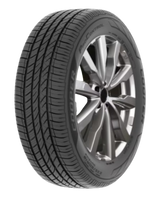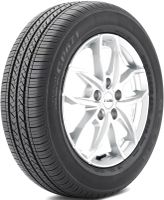High Performance Tire Size
High performance tires, initially crafted for racecourse driving, have evolved into a preferred choice for sports cars and high-speed vehicle owners looking for superior handling response and increased traction. These tires are meticulously engineered to elevate the driving experience through unique tread patterns, specialized rubber compounds, and advanced construction features. They are designed for street use while drawing inspiration from track technology. Hence, they offer enhanced maneuverability and control, especially in wet conditions.
For speed enthusiasts, selecting the right tires is essential. The choice of tires directly impacts driving precision, responsiveness, and safety. By providing greater handling response and traction, these tires enable enthusiasts to push their vehicles to the limit with confidence. This makes them an essential choice for those who value both performance and safety on the road.
The advantages of High Performance tires
Excessive heat can significantly contribute to tire failure, especially as your tire tread wears down. High performance tires use premium materials that greatly enhance their ability to withstand heat buildup, ultimately boosting safety and extending the lifespan of your tire set. It's important to note that the majority of high-performance tires are suitable for warmer climates. If you reside in an area with frequent cold weather (below 7°C), it may be necessary to consider using winter or all-season tires for optimal performance and safety.
In addition, this design allows your vehicle to adeptly navigate sharp curves and deliver an overall smoother driving experience. The broad surface area and grippy rubber compound also facilitate rapid braking, reducing the need for abrupt stops, thereby enhancing road safety and minimizing wear and tear on your vehicle. Even if you don't identify as a high-performance driver, contemporary road conditions and vehicle designs need a specific standard of driving. High performance tires enable your car to responsively react to driver inputs, enhancing compatibility with ABS systems and modern, highly sensitive steering and suspension systems.
The characteristics of High Performance tires
High performance tires share the fundamental components of regular tires, but they have a few twists to optimize performance. These modifications can encompass a lower, more compact sidewall to elevate cornering capabilities. Also, they use rim flange protectors for wheel safeguarding and lateral stiffness. Moreover, belts positioned at a lower angle heighten responsiveness for maximum accuracy. Additionally, they may feature large tread blocks to bolster dry traction and grip. Besides that, an overlay material and a compounded tread cap enhance wet and dry traction. Furthermore, high performance tires may incorporate stiffer and wider apexes to amplify cornering power. Along with that, fewer blades and more aggressive blocks in the tread pattern boost handling.
The most popular High Performance tires
High performance tires, initially crafted for racecourse driving, have evolved into a preferred choice for sports cars and high-speed vehicle owners looking for superior handling response and increased traction. These tires are meticulously engineered to elevate the driving experience through unique tread patterns, specialized rubber compounds, and advanced construction features. They are designed for street use while drawing inspiration from track technology. Hence, they offer enhanced maneuverability and control, especially in wet conditions.
For speed enthusiasts, selecting the right tires is essential. The choice of tires directly impacts driving precision, responsiveness, and safety. By providing greater handling response and traction, these tires enable enthusiasts to push their vehicles to the limit with confidence. This makes them an essential choice for those who value both performance and safety on the road.
The advantages of High Performance tires
Excessive heat can significantly contribute to tire failure, especially as your tire tread wears down. High performance tires use premium materials that greatly enhance their ability to withstand heat buildup, ultimately boosting safety and extending the lifespan of your tire set. It's important to note that the majority of high-performance tires are suitable for warmer climates. If you reside in an area with frequent cold weather (below 7°C), it may be necessary to consider using winter or all-season tires for optimal performance and safety.
In addition, this design allows your vehicle to adeptly navigate sharp curves and deliver an overall smoother driving experience. The broad surface area and grippy rubber compound also facilitate rapid braking, reducing the need for abrupt stops, thereby enhancing road safety and minimizing wear and tear on your vehicle. Even if you don't identify as a high-performance driver, contemporary road conditions and vehicle designs need a specific standard of driving. High performance tires enable your car to responsively react to driver inputs, enhancing compatibility with ABS systems and modern, highly sensitive steering and suspension systems.
The characteristics of High Performance tires
High performance tires share the fundamental components of regular tires, but they have a few twists to optimize performance. These modifications can encompass a lower, more compact sidewall to elevate cornering capabilities. Also, they use rim flange protectors for wheel safeguarding and lateral stiffness. Moreover, belts positioned at a lower angle heighten responsiveness for maximum accuracy. Additionally, they may feature large tread blocks to bolster dry traction and grip. Besides that, an overlay material and a compounded tread cap enhance wet and dry traction. Furthermore, high performance tires may incorporate stiffer and wider apexes to amplify cornering power. Along with that, fewer blades and more aggressive blocks in the tread pattern boost handling.
The most popular High Performance tires
Need live support?
- Mon - Fri: 8am - 7pm ET
- Sat: 9am - 5pm ET
- Sun: Closed







